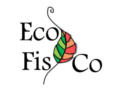Diversity of winter photoinhibitory responses: A case study in co-occurring lichens, mosses, herbs and woody plants from subalpine environments
- Authors:
- Míguez F, Fernández-Marín B, Becerril JM, García-Plazaola JI
- Year:
- 2016
- Journal:
- Physiologia Plantarum
- Volume:
- 16
- Initial page - Ending page:
- 282 - 296
- ISBN/ISSN:
- 0031-9317
- Description:
-
Winter evergreens living in mountainous areas have to withstand a harsh combination of high light levels and low temperatures in wintertime. In response, evergreens can activate a photoprotective process that consists of the downregulation of photosynthetic efficiency, referred to as winter photoinhibition (WPI). WPI has been studied mainly in woody evergreens and crops even when, in many instances, other functional groups such as lichens or bryophytes dominate in alpine and boreal habitats. Thus, we aimed to (1) assess the occurrence of WPI within overwintering evergreens comprising woody species, herbs, mosses and lichens, (2) compare the recovery kinetics among those groups and (3) clarify the role of thylakoid proteins and pigments in both processes: WPI and recovery. With this aim, WPI was analyzed in 50 species in the field and recovery kineticcs were studied in one model species from each functional group. Results showed that high levels of WPI are much more frequent among woody plants than in any other group, but are also present in some herbs, lichens and mosses. Winter conditions almost always led to the de‐epoxidation of the xanthophyll cycle. Nevertheless, changes in the de‐epoxidation level were not associated with the activation/deactivation of WPI in the field and did not match changes in photochemical efficiency during recovery treatments. Seasonal changes in thylakoid proteins [mainly D1 (photosystem II core complex protein) and PsbS (essential protein for thermal dissipation)] were dependent on the functional group. The results highlight the diversity of physiological solutions and suggest a physical–mechanical reason for the more conservative strategy of woody species compared with other groups.

